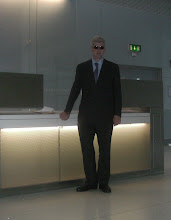 Camera that can 'see' radiation will assess danger levels at stricken Fukushima nuclear reactor' Super-wide Angle Compton Camera' developed for X-ray observation satellite, ASTRO-H Scan comes as radiation detected 370 miles from plant Ted There are still dangerously high radiation levels at Japan’s crippled Fukushima Dai-ichi nuclear reactor – but now the plant’s owner is able to see the normally invisible threat.The Japan Aerospace Exploration Agency (JAXA) has created a prototype ‘Super-wide Angle Compton Camera’ capable of creating images of gamma ray-emitting radioactive particles.
Camera that can 'see' radiation will assess danger levels at stricken Fukushima nuclear reactor' Super-wide Angle Compton Camera' developed for X-ray observation satellite, ASTRO-H Scan comes as radiation detected 370 miles from plant Ted There are still dangerously high radiation levels at Japan’s crippled Fukushima Dai-ichi nuclear reactor – but now the plant’s owner is able to see the normally invisible threat.The Japan Aerospace Exploration Agency (JAXA) has created a prototype ‘Super-wide Angle Compton Camera’ capable of creating images of gamma ray-emitting radioactive particles.
This equipment is based on the gamma ray-observing sensor technology to be added to the agency’s next X-ray observation satellite, ASTRO-H. Radiation-seeker: The Super-wide Angle Compton Camera is capable of creating images of gamma ray-emitting particles It is expected to be able to create visual images of radioactive particles that have collected at high altitudes such as building roofs where it is difficult to conduct measurements with existing equipment. It can also detect particles that have widely dispersed on the ground and residential houses.
 Dr Ken Buesseler, of the Woods Hole Oceanographic Institution in Massachusetts, and colleagues said radioactive elements were detected in zoopAt the moment there is still fatally high radiation levels at the plant and much less water to cool it than officials had thought, according to an internal examination.The news has renewed doubts about the plant's stability and provoked fears the other two reactors that had meltdowns could be in even worse shape. A tool equipped with a tiny video camera, a thermometer, a dosimeter and a water gauge was used to assess damage inside the No. 2 reactor's containment chamber for the second time since the tsunami swept into the Fukushima Dai-ichi plant a year ago.The No. 2 reactor is the only one officials have been able to closely examine so far.The data collected showed the damage from the disaster is so severe, the plant operator will have to develop special equipment and technology to tolerate the harsh environment and decommission the plant, a process expected to last decades.
Dr Ken Buesseler, of the Woods Hole Oceanographic Institution in Massachusetts, and colleagues said radioactive elements were detected in zoopAt the moment there is still fatally high radiation levels at the plant and much less water to cool it than officials had thought, according to an internal examination.The news has renewed doubts about the plant's stability and provoked fears the other two reactors that had meltdowns could be in even worse shape. A tool equipped with a tiny video camera, a thermometer, a dosimeter and a water gauge was used to assess damage inside the No. 2 reactor's containment chamber for the second time since the tsunami swept into the Fukushima Dai-ichi plant a year ago.The No. 2 reactor is the only one officials have been able to closely examine so far.The data collected showed the damage from the disaster is so severe, the plant operator will have to develop special equipment and technology to tolerate the harsh environment and decommission the plant, a process expected to last decades.



No comments:
Post a Comment